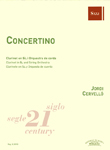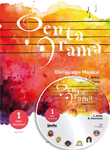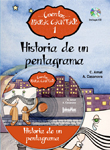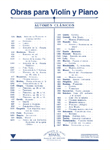Home / Works / Concert per a violí i orquestra de vents, op. 67
Delivery in 24h-72h (Peninsula work days)
WORKS
- Genre
-
Musical education
- Choir
- Counterpoint
- Dictation
- Direction
- Exam study manuals
- General music pedagogy
- Harmony
- Hearing
- Illustrations / Posters
- Improvisation / Sight reading
- Instrument methods
- Instrument pedagogy
- Instrumental study repertoire
- Instrumentation and orquestration
- Musical language
- Solfège
- Templates
- Theory and analysis
-
Incidental music
-
Lined paper
-
Flamenco
-
Religious music
-
Classical / contemporary
-
Modern music
-
Folk music / traditional
-
Musicology
-
Divulgation
-
Games and hobbies
-
Music therapy
-
Children / Youth
-
- Instruments
- Ensemble
- Difficulty level
- Period
- Genre
SOPORTE
Search
Find here: books, scores, composers, digital pieces, cd's
Best-selling works
Our classics

Newsletter
I wish to be informed of the news about your music
We have received your e-mail correctly
Multimedia
Concert per a violí i orquestra de vents, op. 67
Material de orquesta de vientos en alquiler
Violín y orquesta de vientos
BROTONS, SalvadorBROTONS, SalvadorBROTONS, SalvadorReg.: B.4132o
- Ensemble: Symphonic band.
- Genres: Classical / contemporary: Symphonic.
- Product format: Particellas
- Difficulty level: Advanced-superior
- Period: 2nd half S. XX - XXI
- Publishing house: Editorial Boileau
- Collection: Siglo XXI
- No. of pages: 124+20
- Measure: 29,70 x 21,00 cm
- Lenght: 18'
- ISMN: 979-0-3503-4211-0
- Available in digital: No
- Available for rent: Yes
Solo Violin
3[1.2.3/pic] 2 3[1.2.3/bcl] 2 — 6sx[1ssx.2asx.2tsx.
1bsx] — 2 2 2 3[2euph.1tuba] — tmp+1 — hp — str[only db]
perc: glock, templeblks, cast, sus cym, vib, bd, woodblks, ttam, sd, cym
Originally written as a Sonata for violin and piano, at the request of Manuel Guillén, I decided to convert the sonata into a concerto. Structurally, an extended cadenza for the violin is added to the concerto between the second and third movements, as well as an orchestral introduction to the third movement.
The orchestration gives the work more timbral colour, brilliance and expressive force. The soloist's part is essentially virtuosic, combining very expressive passages with others of more rhythmic aggressiveness.
A gentle lyricism dominates the exposition of the first movement in sonata form. The music in 5/4 time flows nicely through the whole violin tessitura with diaphanous textures. In its development the music unfolds a little more aggressiveness and rhythm, always keeping the same tempo. Distant harmonics from the violin placidly conclude the movement after a modified re-exposition.
Continuing this magical atmosphere, the first theme of the slow tempo has an introductory character, which is expressed through a high-pitched and distant overtone melody presented by the soloist, which the orchestra repeats three more times in fugato style. After a short but intense interlude by the orchestra, the violin presents the main theme of the movement, also with a calm and expressive rhythm, which progressively becomes more agitated, acquiring more tension. Once the climax has been reached, the music becomes calmer again to seek a very relaxed ending, re-exposing the two themes in a mirror image.
After a cadenza by the soloist, the last movement, in ternary rhythm, with marked accents and hemiolas, follows without interruption. It is written in modified rondo form. The central part is entirely based on the first theme of the second movement, acquiring a stimulating development.
Salvador Brotons









